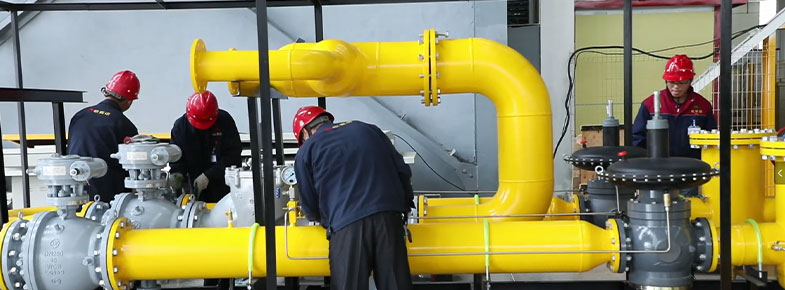
Oct . 14, 2024 04:58
Back to list
Natural Gas Pressure Regulation Valve for Safe System Operation and Efficiency Improvement
Understanding Natural Gas Pressure Reducing Valves
Natural gas is a crucial energy source used in various applications, from residential heating to industrial processes. One of the essential components in natural gas distribution systems is the pressure reducing valve (PRV). These valves are vital for maintaining safety and efficiency in gas delivery by regulating the pressure of natural gas before it enters consumers' pipelines.
What is a Pressure Reducing Valve?
A pressure reducing valve is designed to reduce and control the pressure of natural gas flowing through a pipeline system. In natural gas distribution, the pressure can vary significantly based on various factors, including the distance from the supply source and the demand fluctuations downstream. A PRV ensures that the gas pressure remains within a designated safe and usable range, typically between 5 to 60 psi, depending on the specific application.
How Does a PRV Work?
The operation of a pressure reducing valve is based on the principles of fluid dynamics. Inside the valve, there are typically two main chambers the inlet chamber, where high-pressure gas enters, and the outlet chamber, which directs the gas to the downstream system. The PRV contains a diaphragm that responds to the pressure changes in the outlet chamber. When the pressure in this chamber exceeds the preset limit, the diaphragm moves to partially close the valve. This adjustment reduces the flow of gas and lowers the outlet pressure.
Conversely, if the outlet pressure falls below the set point, the diaphragm moves back, allowing more gas to flow through, thus maintaining a consistent pressure. This dynamic regulation ensures that the gas pressure remains stable and safe for end-users.
Applications of PRVs
Pressure reducing valves are widely used in various applications, including
1. Residential Applications In homes, PRVs are essential for regulating the pressure of natural gas used for heating systems, water heaters, and cooking appliances. They protect appliances from damage due to excessive pressure.
natural gas pressure reducing valve

3. Industrial Applications In industrial settings, PRVs are vital for processes that require specific gas pressures. They help in maintaining the efficiency of machinery and equipment that utilizes natural gas.
4. Natural Gas Transportation PRVs are used in pipelines that transport natural gas over long distances to manage changes in pressure that occur due to elevation changes and varying demand along the route.
Benefits of Using Pressure Reducing Valves
The integration of pressure reducing valves into natural gas systems offers numerous benefits
- Safety PRVs minimize the risk of high-pressure gas reaching appliances and systems, preventing potential accidents, gas leaks, and explosions.
- Efficiency By ensuring that gas is delivered at optimal pressure levels, PRVs help improve the overall efficiency of heating systems and appliances, potentially leading to reduced fuel consumption and lower energy costs.
- Extended Equipment Lifespan By protecting appliances from pressure fluctuations, PRVs can reduce wear and tear on gas-powered devices, prolonging their service life.
- Regulatory Compliance Many regions have strict regulations regarding gas pressure in distribution systems. Using PRVs helps companies comply with these safety standards.
Conclusion
Pressure reducing valves are integral to the safe and efficient distribution of natural gas. By carefully managing gas pressure, these devices protect appliances, enhance energy efficiency, and comply with safety regulations. The importance of PRVs in residential, commercial, and industrial applications cannot be overstated, making them a crucial component in modern gas delivery systems. As the demand for natural gas continues to grow, understanding and utilizing advanced PRV technologies will be essential for ensuring safety and operational effectiveness in gas distribution networks.
Next:
Latest news
-
Safety Valve Spring-Loaded Design Overpressure ProtectionNewsJul.25,2025
-
Precision Voltage Regulator AC5 Accuracy Grade PerformanceNewsJul.25,2025
-
Natural Gas Pressure Regulating Skid Industrial Pipeline ApplicationsNewsJul.25,2025
-
Natural Gas Filter Stainless Steel Mesh Element DesignNewsJul.25,2025
-
Gas Pressure Regulator Valve Direct-Acting Spring-Loaded DesignNewsJul.25,2025
-
Decompression Equipment Multi-Stage Heat Exchange System DesignNewsJul.25,2025

